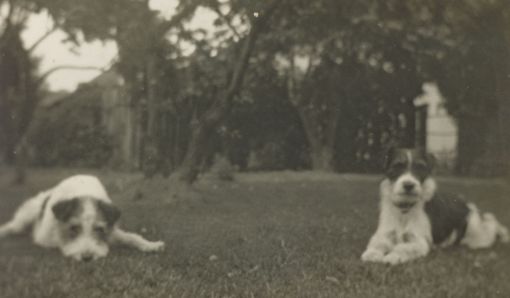In 1933 while I was teaching at Somerset West my parents spent the June holidays in going North to the then Rhodesia to visit some of the mission stations there. Chief of these was Morgenster (Morning Star) Mission which had been founded by the Rev Andrew Louw of the NGK, a cousin of my mother’s. She also wanted to see the memorial on the Matoppo Mountains to the members of the Shangani Patrol who had all been killed in the Matabele War (December 1893) as her eldest brother (Arend Hofmeyr) had been a member of this patrol. Because of my parent’s absence from home I decided to go to George to stay with my Uncle Jack McGregor and his family who had several times invited me to do so.
Thus it was not until the September holidays of 1935 that we were married. Margery was an Anglican but had been to our house very often during the time that she was working in Cape Town. She had thus got to know and to love my father, a very loveable person and, as her mother was at this time in England on a visit to her grandchildren there (Margery’s father had died rather suddenly in 1929) it was agreed that my father should marry us in his church. At that time she and her eldest sister Gwen (who was working for the Red Cross) had a small flat in Sea Point. So on the 28th of September 1935 we were married. Gwen, as Margery’s senior living relative, gave her away. After the ceremony we, plus Paul and Vulcan, got much exercise and enjoyment in chasing sea gulls! We travelled in a car belonging to Margery’s sister Dorothy.
Meanwhile I had managed to let a lovely house in Somerset West, a double-storeyed building with a thatched roof in a large garden full of trees and rose bushes. The rent was 」5. 0.0 per month. The house had been standing empty for years and its owner had warned us that he was wanting to sell it. We grew very fond of this house as it was so comfortable and convenient but, soon after we had settled into it the owner came to tell us that he had sold it and we would have to vacate it by the end of December. Fortunately we did not yet have much in the way of furniture so moving was not a very big nuisance. We then went into a fellow-teacher’s house (he was on three month’s leave) with our furniture stored, later a small flat in the Strand and finally, in the middle of 1936, into a De Beer’s house, one of a group of double-storeyed houses on the edge of Somerset West, in among the pine trees, owned by the dynamite factory. This we had for two and a half years and found it very convenient. It was close to the churches and the shopping centre and the tennis court was ten minute’s walk away. (Margery and I were both very keen tennis players).
Soon after we were married Margery’s sister Dorothy, who was running the Morris Pharmacy in George, gave her a Morris 10 car which she, Dorothy, had found too small for her use. She had not yet paid all the instalments on the car so we had to do this, but it did mean that we got possession of our first car. We had both by this time been tested for driving and had received our driving licences.
There was at that time in Somerset West a very good nursing home run by a Scots matron, Mrs Threlfall. It was not far from our house and so we made arrangements for the birth of our first child to be there. He was born on the 24th of December 1936 and so narrowly missed being born on Christmas day or his mother’s birthday the 28th of December. Fortunately he was a strong and healthy child. He was christened in my father’s church in Three Anchor Bay and named Andrew Christopher Radford: Andrew after me and my father, Christopher to make him distinctive and Radford after Margery’s mother’s family. We always called him Christopher.
Towards the end of 1937 I saw advertisements for senior English and History teachers in two mission institutions, Lovedale (Church of Scotland) and Healdtown (Methodist). I applied for both of these posts. Margery, of course, knew that I was eager to go to a mission institution and was very happy to support me in this ideal. So we waited to see whether our chance was at hand. After about as week I received a reply-paid telegram from Healdtown offering me the post there, to which I immediately replied accepting it. A few days later I got a letter from Lovedale offering me the post there, so I had to reply with the news that I had already accepted the Healdtown post. Later, when I got to know more about Lovedale and its staff I was very glad to have gone to Healdtown. Thus in January 1938 I started my career as an educational missionary.







Leave a comment